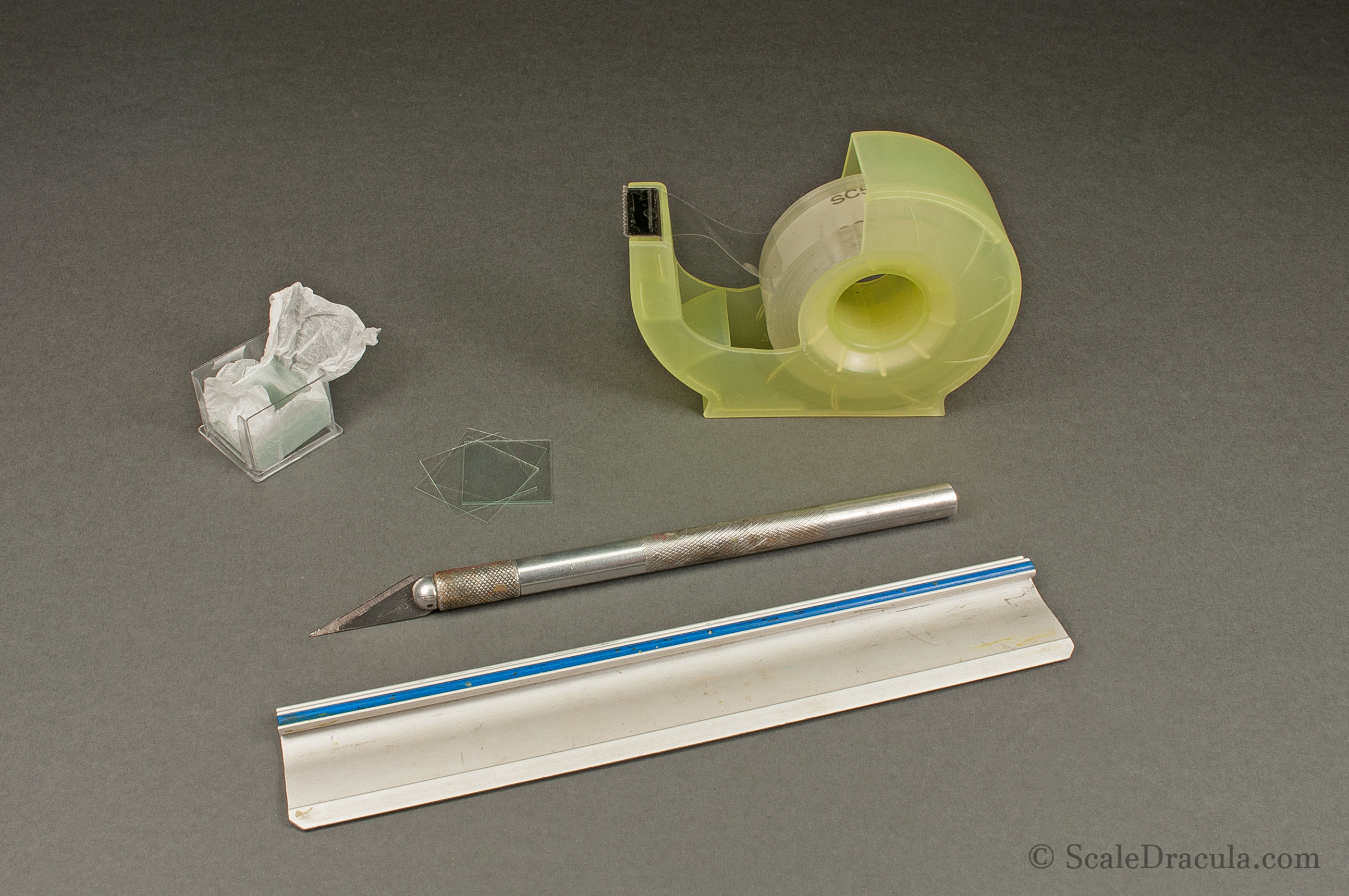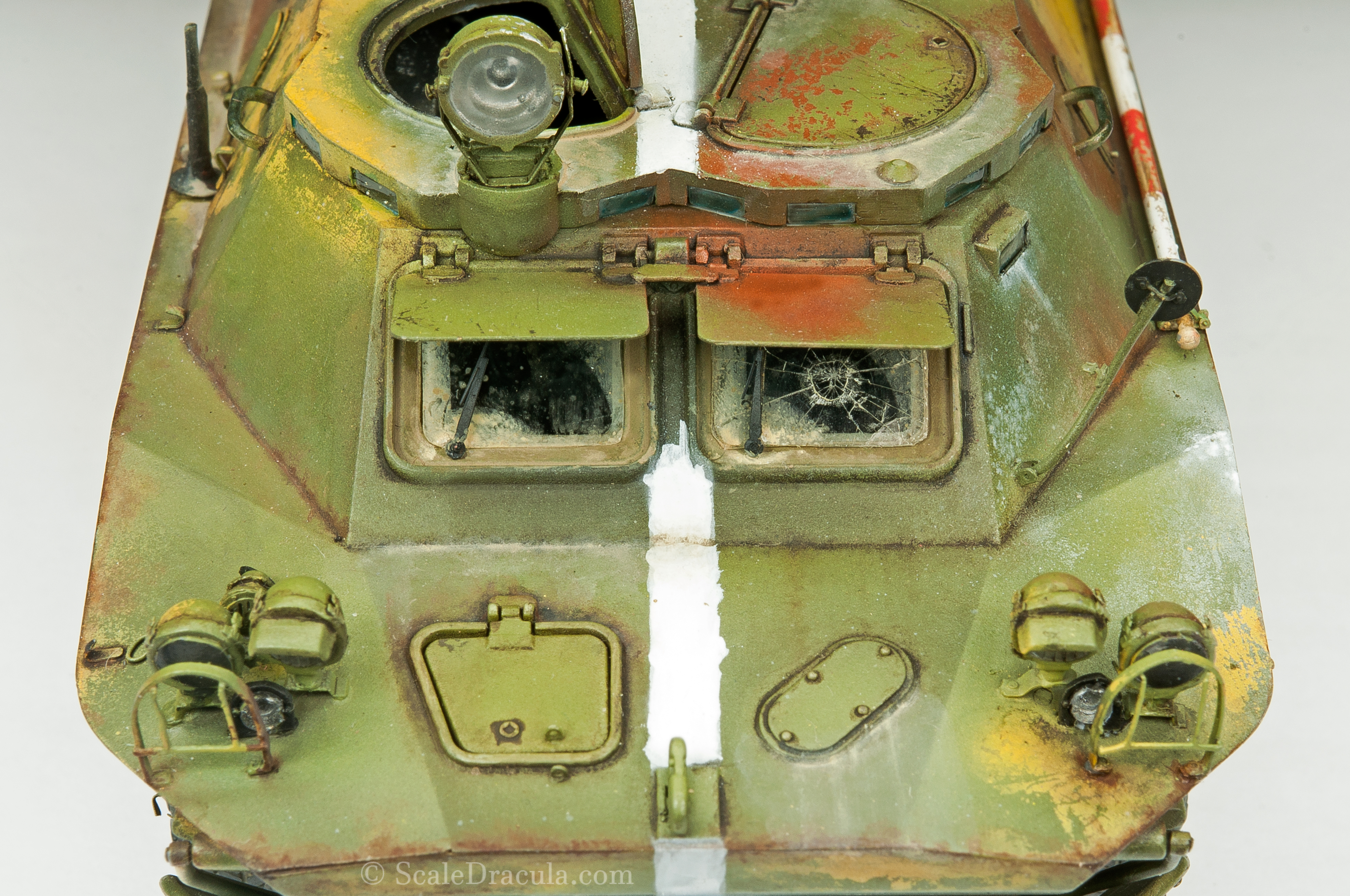A broken glass is always a cool effect in scale modelling. No matter if it is a windshield of an armoured car or a window in a wrecked house diorama – the viewer will be dying to know how you did it.
There’s a couple of ways to achieve this effect but using a real glass seems like the best solution to me. With this technique we can replicate a normal glass and possibly bulletproof glass. The modern style tempered glass needs another method.
Just to be clear: I haven’t invented this technique. It’s been around for a long time and I’m not sure who the original author is. I just want to give you a visual SBS as I can’t find one online and I think the effect is pretty cool.
This tutorial is a part of my BRDM-2 build. If you’re not familiar with the full story, you can find it here:
Caution!
We work with real glass here. It's tiny but it can still hurt you. Make sure you protect your body, especially the eyes. If anything goes wrong, please don't sue me. 😉
Step 1:
Prepare the necessary stuff. You’ll need:
- A set of microscope cover glass slips (preferably 0.13-0.17 mm thick)
- Transparent adhesive tape
- Ruler
- Hobby knife
- Grain of sand or any other tiny round object.
- (optionally) Glass knife or diamond scribe pen
I decided to use microscope slips for this project because they are cheap and easy to get. And trust me, you’re going to need some spares… I’ve seen guys experimenting with cellphone covers as well, but these won’t work in this method.

Step 2:
Cut the glass to the desired shape.
I honestly don’t have a perfect formula for this. You can use a typical glass knife, but it works better with a thicker material. Another method is using a diamond scribe guided by a ruler.
I ended up just breaking the glass with a ruler to get the general shape. Then I polished the piece with a sanding paper. It’s tedious and time-consuming but definitely possible.
In a perfect scenario you can glue the glass from the inside of your model to hide the excess. Then you won’t have to worry about the exact shape.

Step 3:
Clean the glass of any dirt or fingerprints. Then gently attach it to the adhesive tape.
The easiest way to do it is to actually put the adhesive tape on the desk with the sticky side facing up. Then slowly place the glass on top of the tape.

Step 4:
Some bubbles of air will probably get trapped under the tape. Remove them by gently rubbing the surface with a q-tip. Try to push the bubble to the side of the glass to empty the air pocket.
If too many bubbles get stuck, I’m afraid you need to start all over again.

Step 5:
Cut off the excess tape. Precision is essential here so make sure you use a fresh blade.

Step 6:
Here’s where the fun begins. Place a big grain of sand on a hard surface and press the glass against it. The clean, untaped side should get in contact with the grain.
You can experiment with different objects, but the grain will give you this classic spiderweb effect.

Step 7:
Attach the glass to your model or diorama. I would recommend a thick CA glue or a glossy varnish. Be careful not to mess it up.
The glass can be weathered the same as everything else. Just remember the paint has little to grab on to. Give it some extra time to dry or, even better, just don’t touch the glass at all after painting.










5 Comments
Chris
11 August 2022 at 21:55Do you have HOW TO…for bullet holes or shell holes ie tank turrent etc…
ScaleDracula
12 August 2022 at 02:29Not yet, mate. Maybe some day. In the meantime you can check these videos by uncle Nightshift:
https://www.youtube.com/watch?v=8I3lY0zQPbg
https://www.youtube.com/watch?v=N9tkYqRLyRY
Dario Risso
13 September 2022 at 16:58Hi there! Nice job! As I understand, you leave the tape glued on the glass piece, right? Then glue the glass part with…which face out the vehicle?
ScaleDracula
13 September 2022 at 20:46Yes. The taped side should probably face the inside of the vehicle. So it’s not that visible.
Dario Risso
13 September 2022 at 21:31Great, thanks!!